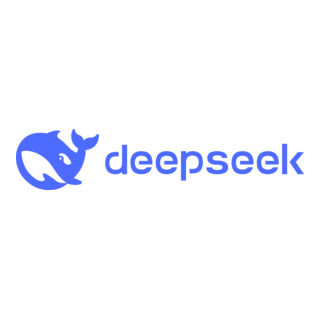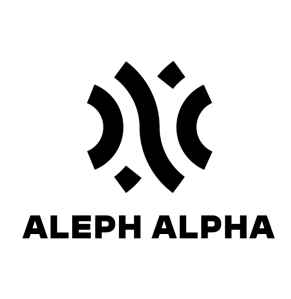Best Large Language Models (LLMs) Software
Best Large Language Models (LLMs) Software At A Glance
G2 takes pride in showing unbiased reviews on user satisfaction in our ratings and reports. We do not allow paid placements in any of our ratings, rankings, or reports. Learn about our scoring methodologies.
A weekly snapshot of rising stars, new launches, and what everyone's buzzing about.
- Overview
- Pros and Cons
- User Satisfaction
- Seller Details
- Owner
- Senior Software Engineer
- Information Technology and Services
- Computer Software
- 53% Small-Business
- 30% Mid-Market
4,552,099 Twitter followers
- Overview
- Pros and Cons
- User Satisfaction
- Seller Details
DeepMind's Gemini is a suite of advanced AI models and products, designed to push the boundaries of artificial intelligence. It represents DeepMind's next-generation system, building on the foundation
- Research Analyst
- Software Engineer
- Information Technology and Services
- Computer Software
- 48% Small-Business
- 32% Mid-Market
31,497,057 Twitter followers
- Overview
- Pros and Cons
- User Satisfaction
- Seller Details
Claude, by Anthropic, is a family of advanced AI assistants and Large Language Models (LLMs) designed for safe, helpful, and natural conversation, excelling at tasks like writing, coding, summarizing,
- Computer Software
- Information Technology and Services
- 65% Small-Business
- 24% Mid-Market
713,503 Twitter followers
- Overview
- Pros and Cons
- User Satisfaction
- Seller Details
Meta’s Llama 4 Maverick 17B model fine-tuned for instruction tasks with long context support.
- 58% Small-Business
- 24% Mid-Market
- Overview
- Pros and Cons
- User Satisfaction
- Seller Details
DeepSeek LLM is a series of high-performance, open-source large language models from China-based DeepSeek AI.
- 33% Enterprise
- 33% Mid-Market
- Overview
- Pros and Cons
- User Satisfaction
- Seller Details
Grok is your truth-seeking AI companion for unfiltered answers with advanced capabilities in reasoning, coding, and visual processing.
- 67% Small-Business
- 33% Mid-Market
- Overview
- Pros and Cons
- User Satisfaction
- Seller Details
- 100% Enterprise
13,105,074 Twitter followers
- Overview
- User Satisfaction
- Seller Details
Aleph Alpha's LLM-powered agent accelerates complex semiconductor documentation retrieval, reducing search time by 90%.
- Overview
- User Satisfaction
- Seller Details
Amazon Nova is a suite of advanced foundation models developed by Amazon, designed to deliver state-of-the-art intelligence and industry-leading price performance. Integrated within Amazon Bedrock, th
2,217,439 Twitter followers
- Overview
- User Satisfaction
- Seller Details
The BLOOM model has been proposed with its various versions through the BigScience Workshop. BigScience is inspired by other open science initiatives where researchers have pooled their time and resou
593,856 Twitter followers
- Overview
- User Satisfaction
- Seller Details
Command A is Cohere's most advanced large language model, specifically engineered to meet the complex demands of enterprise applications. With 111 billion parameters and a context length of 256,000 to
- Overview
- User Satisfaction
- Seller Details
Cutting-edge AI-driven infrastructure tailored for collecting, analyzing, and interpreting behavioral data. By leveraging the power of AI and machine learning, we transform raw behavioral data into ac
4,723 Twitter followers
- Overview
- User Satisfaction
- Seller Details
Zhipu AI is a Chinese artificial intelligence company specializing in the development of large language and multimodal models. Established in 2019 as a spinoff from Tsinghua University's Computer Scie
- Overview
- User Satisfaction
- Seller Details
52,706 Twitter followers
- Overview
- User Satisfaction
- Seller Details
165,377 Twitter followers
Learn More About Large Language Models (LLMs) Software
Large language models (LLMs) are machine learning models developed to understand and interact with human language at scale. These advanced artificial intelligence (AI) systems are trained on vast amounts of text data to predict plausible language and maintain a natural flow.
What are large language models (LLMs)?
LLMs are a type of Generative AI models that use deep learning and large text-based data sets to perform various natural language processing (NLP) tasks.
These models analyze probability distributions over word sequences, allowing them to predict the most likely next word within a sentence based on context. This capability fuels content creation, document summarization, language translation, and code generation.
The term "large” refers to the number of parameters in the model, which are essentially the weights it learns during training to predict the next token in a sequence, or it can also refer to the size of the dataset used for training.
How do large language models (LLMs) work?
LLMs are designed to understand the probability of a single token or sequence of tokens in a longer sequence. The model learns these probabilities by repeatedly analyzing examples of text and understanding which words and tokens are more likely to follow others.
The training process for LLMs is multi-stage and involves unsupervised learning, self-supervised learning, and deep learning. A key component of this process is the self-attention mechanism, which helps LLMs understand the relationship between words and concepts. It assigns a weight or score to each token within the data to establish its relationship with other tokens.
Here’s a brief rundown of the whole process:
- A large amount of language data is fed to the LLM from various sources such as books, websites, code, and other forms of written text.
- The model comprehends the building blocks of language and identifies how words are used and sequenced through pattern recognition with unsupervised learning.
- Self-supervised learning is used to understand context and word relationships by predicting the following words.
- Deep learning with neural networks learns language's overall meaning and structure, going beyond just predicting the next word.
- The self-attention mechanism refines the understanding by assigning a score to each token to establish its influence on other tokens. During training, scores (or weights) are learned, indicating the relevance of all tokens in the sequence to the current token being processed and giving more attention to relevant tokens during prediction.
What are the common features of large language models (LLMs)?
LLMs are equipped with features such as text generation, summarization, and sentiment analysis to complete a wide range of NLP tasks.
- Human-like text generation across various genres and formats, from business reports to technical emails to basic scripts tailored to specific instructions.
- Multilingual support for translating comments, documentation, and user interfaces into multiple languages, facilitating global applications and seamless cross-lingual communication.
- Understanding context for accurately comprehending language nuances and providing appropriate responses during conversations and analyses.
- Content summarization recapitulates complex technical documents, research papers, or API references for easy understanding of key points.
- Sentiment analysis categorizes opinions expressed in text as positive, negative, or neutral, making them useful for social media monitoring, customer feedback analysis, and market research.
- Conversational AI and chatbots powered by LLM simulate human-like dialogue, understand user intent, answer user questions, or provide basic troubleshooting steps.
- Code completion analyzes an existing code to report typos and suggests completions. Some advanced LLMs can even generate entire functions based on the context. It increases development speed, boosts productivity, and tackles repetitive coding tasks.
- Error identification looks for grammatical errors or inconsistencies in writing and bugs or anomalies in code to help maintain high code and writing quality and reduce debugging time.
- Adaptability allows LLMs to be fine-tuned for specific applications and perform better in legal document analysis or technical support tasks.
- Scalability processes vast amounts of information quickly and accommodates the needs of both small businesses and large enterprises.
Who uses large language models (LLMs)?
LLMs are becoming increasingly popular across various industries because they can process and generate text in creative ways. Below are some businesses that interact with LLMs more often.
- Content creation and media companies produce significant content, such as news articles, blogs, and marketing materials, by utilizing LLMs to automate and enhance their content creation processes.
- Customer service providers with large customer service operations, including call centers, online support, and chat services, power intelligent chatbots, and virtual assistants using LLMs to improve response times and customer satisfaction.
- E-commerce and retail platforms use LLMs to generate product descriptions and offer personalized shopping experiences and customer service interactions, enhancing the overall shopping experience.
- Financial services providers like banks, investment firms, and insurance companies benefit from LLMs by automating report generation, providing customer support, and personalizing financial advice, thus improving efficiency and customer engagement.
- Education and e-learning platforms offering educational content and tutoring services use LLMs to create personalized learning experiences, automate grading, and provide instant feedback to students.
- Healthcare providers use LLMs for patient support, medical documentation, and research, LLMs can analyze and interpret medical texts, support diagnosis processes, and offer personalized patient advice.
- Technology and software development companies can use LLMs to generate documentation, provide coding assistance, and automate customer support, especially for troubleshooting and handling technical queries.
Types of large language models (LLMs)
Language models can basically be classified into two main categories — statistical models and language models designed on deep neural networks.
Statistical language models
These probabilistic models use statistical techniques to predict the likelihood of a word or sequence of words appearing in a given context. They analyze large corpora of text to learn the patterns of language.
N-gram models and hidden Markov models (HMMs) are two examples.
N-gram models analyze sequences of words (n-grams) to predict the probability of the next word appearing. The probability of a word's occurrence is estimated based on the occurrence of the words preceding it within a fixed window of size 'n.'
For example, consider the sentence, "The cat sat on the mat." In a trigram (3-gram) model, the probability of the word "mat" occurring after the sequence "sat on the" is calculated based on the frequency of this sequence in the training data.
Neural language models
Neural language models utilize neural networks to understand language patterns and word relationships to generate text. They surpass traditional statistical models in detecting complex relationships and dependencies within text.
Transformer models like GPT use self-attention mechanisms to assess the significance of each word in a sentence, predicting the following word based on contextual dependencies. For example, if we consider the phrase "The cat sat on the," the transformer model might predict "mat" as the next word based on the context provided.
Among large language models, there are also two primary types — open-domain models and domain-specific models.
- Open-domain models are designed to perform various tasks without needing customization, making them useful for brainstorming, idea generation, and writing assistance. Examples of open-domain models include generative pre-trained transformer (GPT) and bidirectional encoder representations from transformers (BERT).
- Domain-specific models: Domain-specific models are customized for specific fields, offering precise and accurate outputs. These models are particularly useful in medicine, law, and scientific research, where expertise is crucial. They are trained or fine-tuned on datasets relevant to the domain in question. Examples of domain-specific LLMs include BioBERT (for biomedical texts) and FinBERT (for financial texts).
Benefits of large language models (LLMs)
LLMs come with a suite of benefits that can transform countless aspects of how businesses and individuals work. Listed below are some common advantages.
- Increased productivity: LLMs simplify workflows and accelerate project completion by automating repetitive tasks.
- Improved accuracy: Minimizing inaccuracies is crucial in financial analysis, legal document review, and research domains. LLMs enhance work quality by reducing errors in tasks like data entry and analysis.
- Cost-effectiveness: LLMs reduce resource requirements, leading to substantial cost savings for businesses of all sizes.
- Accelerated development cycles: The process from code generation and debugging to research and documentation gets faster for software development tasks, leading to quicker product launches.
- Enhanced customer engagement: LLM-powered chatbots like ChatGPT enable swift responses to customer inquiries, round-the-clock support, and personalized marketing, creating a more immersive brand interaction.
- Advanced research capabilities: With LLMs capable of summarizing complex data and sourcing relevant information, research processes become simplified.
- Data-driven insights: Trained to analyze large datasets, LLMs can extract trends and insights that support data-driven decision-making.
Applications of large language models
LLMs are used in various domains to solve complex problems, reduce the amount of manual work, and open up new possibilities for businesses and people.
- Keyword research: Analyzing vast amounts of search data helps identify trends and recommend keywords to optimize content for search engines.
- Market research: Processing user feedback, social media conversations, and market reports uncover insights into consumer behavior, sentiment, and emerging market trends.
- Content creation: Generating written content such as articles, product descriptions, and social media posts, saves time and resources while maintaining a consistent voice.
- Malware analysis: Identifying potential malware signatures, suggesting preventive measures by analyzing patterns and code, and generating reports help assist cybersecurity professionals.
- Translation: Enabling more accurate and natural-sounding translations, LLMs provide multilingual context-aware translation services.
- Code development: Writing and reviewing code, suggesting syntax corrections, auto-completing code blocks, and generating code snippets within a given context.
- Sentiment analysis: Analyzing text data to understand the emotional tone and sentiment behind words.
- Customer support: Engaging with users, answering questions, providing recommendations, and automating customer support tasks, enhance the customer experience with quick responses and 24/7 support.
How much does LLM software cost?
The cost of an LLM depends on multiple factors, like type of license, word usage, token usage, and API call consumptions. The top contenders of LLMs are GPT-4, GPT-Turbo, Llama 3.1, Gemini, and Claude, which offer different payment plans like subscription-based billing for small, mid, and enterprise businesses, tiered billing based on features, tokens, and API integrations and pay-per-use based on actual usage and model capacity and enterprise custom pricing for larger organizations.
Mostly, LLM software is priced according to the number of tokens consumed and words processed by the model. For example, GPT-4 by OpenAI charges $0.03 per 1000 input tokens and $0.06 for output. Llama 3.1 and Gemini are open-source LLMs that charge between $0.05 to $0.10 per 1000 input tokens and an average of 100 API calls. While the pricing portfolio for every LLM software varies depending on your business type, version, and input data quality, it has become evidently more affordable and budget-friendly with no compromise to processing quality.
Limitations of large language model (LLM) software
While LLMs have boundless benefits, inattentive usage can also lead to grave consequences. Below are the limitations of LLMs that teams should steer clear of:
- Plagiarism: Copying and pasting text from the LLM platform directly on your blog or other marketing media will raise a case of plagiarism. As the data processed by the LLM is mostly internet-scraped, the chances of content duplication and replication become significantly higher.
- Content bias: LLM platforms can alter or change the cause of events, narratives, incidents, statistics, and numbers, as well as inflate data that can be highly misleading and dangerous. Because of limited training abilities, these platforms have a strong chance of generating factually incorrect content that offends people.
- Hallucination: LLMs even hallucinate and don't correctly register the user's input prompt. Though they might have gotten similar prompts before and know how to answer, they reply in a hallucinated state and don't give you access to data. Writing a follow-up prompt can get LLMs out of this stage and functional again.
- Cybersecurity and data privacy: LLMs transfer critical, company-sensitive data to public cloud storage systems that make your data more prone to data breaches, vulnerabilities, and zero-day attacks.
- Skills gap: Deploying and maintaining LLMs requires specialized knowledge, and there may be a skills gap in current teams that needs to be addressed through hiring or training.
How to choose the best large language model (LLM) for your business?
Selecting the right LLM software can impact the success of your projects. To choose the model that suits your needs best, consider the following criteria:
- Use case: Each model has strengths, whether generating content, providing coding assistance, creating chatbots for customer support, or analyzing data. Determine the primary task the LLM will perform and look for models that excel in that specific use case.
- Model size and capacity: Consider the model's size, which often correlates with capacity and processing needs. Larger models can perform various tasks but require more computational resources. Smaller models may be more cost-effective and sufficient for less complex tasks.
- Accuracy: Evaluate the LLM's accuracy by reviewing benchmarks or conducting tests. Accuracy is critical — an error-prone model could negatively impact user experience and work efficiency.
- Performance: Assess the model's speed and responsiveness, especially if real-time processing is required.
- Training data and pre-training: Determine the breadth and diversity of the training data. Models pre-trained on extensive, varied datasets tend to work better across inputs. However, models trained on niche datasets may perform better for specialized applications.
- Customization: If your application has unique needs, consider whether the LLM allows for customization or fine-tuning with your data to better tailor its outputs.
- Cost: Factor in the total cost of ownership, including initial licensing fees, computational costs for training and inference, and any ongoing fees for updates or maintenance.
- Data security: Look for models that offer security features and compliance with data protection laws relevant to your region or industry.
- Availability and licensing: Some models are open-source, while others may require a commercial license. Licensing terms can dictate the scope of use, such as whether it's available for commercial applications or has any usage limits.
It's worthwhile to test multiple models in a controlled environment to directly compare how they meet your specific criteria before making a final decision.
LLM implementation
The implementation of an LLM is a continuous process. Regular assessments, upgrades, and re-training are necessary to ensure the technology meets its intended objectives. Here's how to approach the implementation process:
- Define objectives and scope: Clearly define your project goals and success metrics from the outset to specify what you wish to achieve using an LLM. Identify areas where automation or cognitive enhancements can add value.
- Data privacy and compliance: Choose an LLM with solid security measures that comply with data protection regulations relevant to your industry, such as GDPR. Establish data handling procedures that preserve user privacy.
- Model selection: Evaluate whether a general-purpose model like GPT-3 better suits your needs or if a domain-specific model would provide more precise functionality.
- Integration and infrastructure: Determine whether you will use the LLM as a cloud service or host it on-premises, considering the computational and memory requirements, potential scalability needs, and latency sensitivities. Account for the API endpoints, SDKs, or libraries you'll need.
- Training and fine-tuning: Allocate resources for training and validation and tune the model through continuous learning from new data.
- Content moderation and quality control: Implement systems to oversee the LLM-generated content to ensure that the outputs align with your organizational standards and suit your audience.
- Continuous evaluation and improvement: Build an evaluation framework to regularly assess your LLM's performance against your objectives. Capture user feedback, monitor performance metrics, and be ready to re-train or update your model to adapt to evolving data patterns or business needs.
Alternatives to LLM software
There are several other alternatives to explore in place of a large language model software that can be tailored to specific departmental workflows.
- Natural language understanding (NLU) tools facilitate computer comprehension of human language. NLU enables machines to understand, interpret, and derive meaning from human language. It involves text understanding, semantic analysis, entity recognition, sentiment analysis, and more. NLU is crucial for various applications, such as virtual assistants, chatbots, sentiment analysis tools, and information retrieval systems.
- Natural language generation (NLG) tools convert structured information into coherent human language text. It is used in language translation, summarization, report generation, conversational agents, and content creation.
LLM trends
The large language model space is constantly evolving, and what's current now could change in the near future as new research and developments occur. Here are some trends that are currently ruling the LLM domain.
- Increasing personalization: LLMs' ability to understand and generate human-like text drives the growing use of personalized content, recommendations, and interactions in customer services, marketing, education, and e-commerce.
- Ethical AI and bias mitigation: There's a strong focus on developing methods to reduce biases in LLMs and ensure their use aligns with ethical guidelines, reflecting a broader trend towards responsible AI.
- Multimodal models: A significant trend is the integration of LLMs with other types of AI models, such as those capable of processing images, audio, and video. This leads to more comprehensive AI systems capable of understanding and generating content across different formats.
- Sustainable and cost-effective LLMs: Efforts to make LLMs more energy-efficient and cost-effective are ongoing. New models are being designed to reduce the environmental impact and computational resources required for training and inference.
Researched and written by Matthew Miller
Reviewed and edited by Sinchana Mistry

















